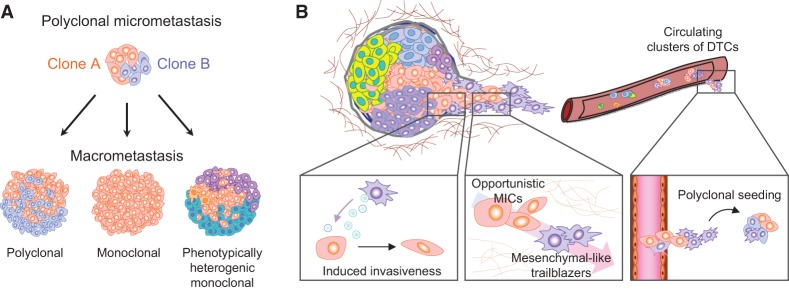Figure 5.
Clonal cooperation in metastasis. (A) Representation of different macrometastasis outputs from initial polyclonal dissemination and seeding. Polyclonal seeding and micrometastasis may develop polyclonal (left) or monoclonal (middle) macrometastasis depending on the clonal and tumor–stroma interaction dynamics in the target organ. (Right) In addition, metastasis heterogeneity can result from the generation of multiple phenotypes from a single metastatic clone. (B, left) Mesenchymal-like secretory cells can induce invasive phenotypes in epithelial-like TICs through secreted factors such as SPARC, facilitating their escape from the primary site. (Middle) In addition, noninvasive TICs/MICs can opportunistically follow trailblazer invasive cells to escape from the primary site or extravasate and infiltrate a distant tissue. (Right) Polyclonal seeding of a distant organ as a result of clonal cooperation.

